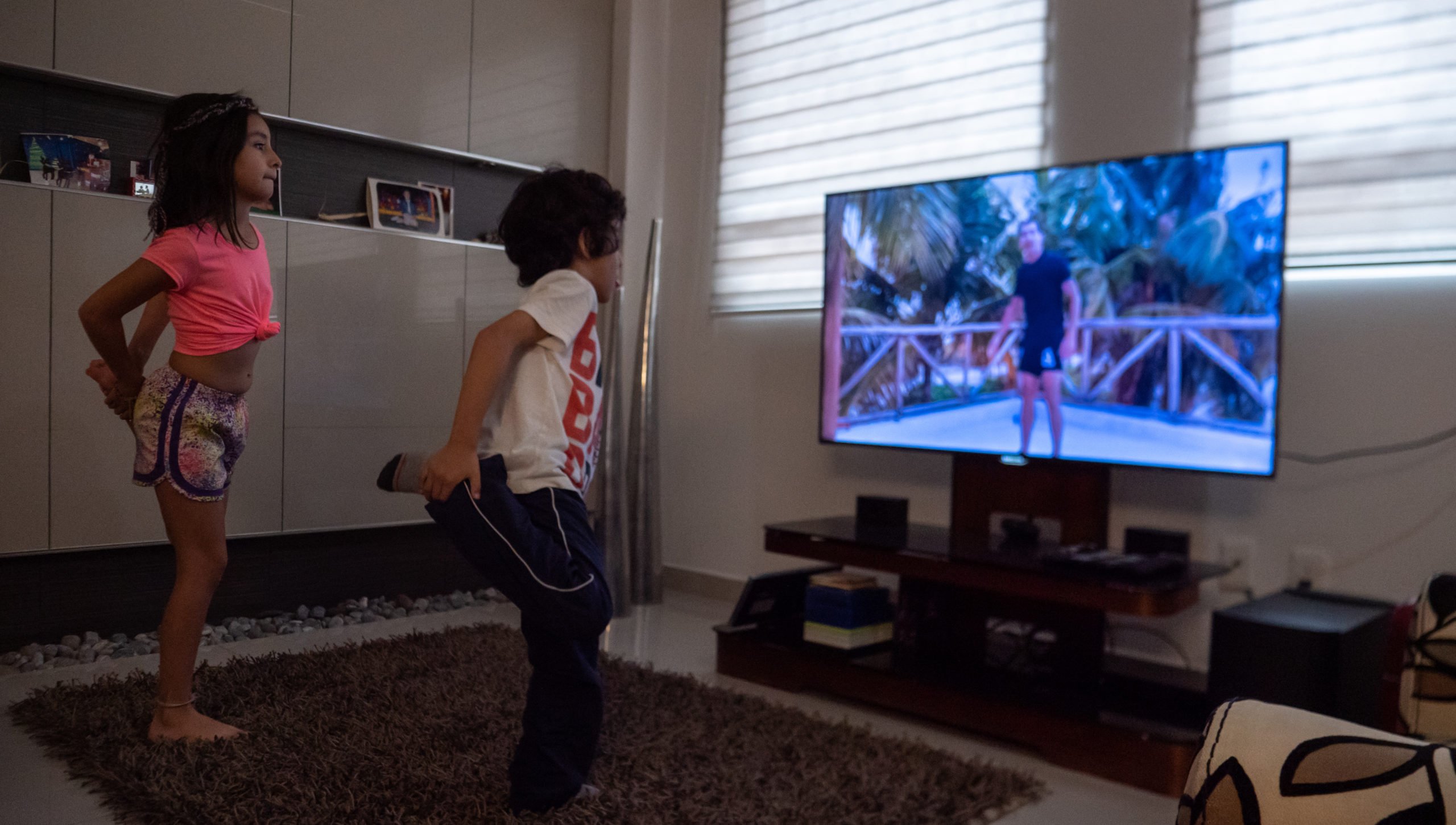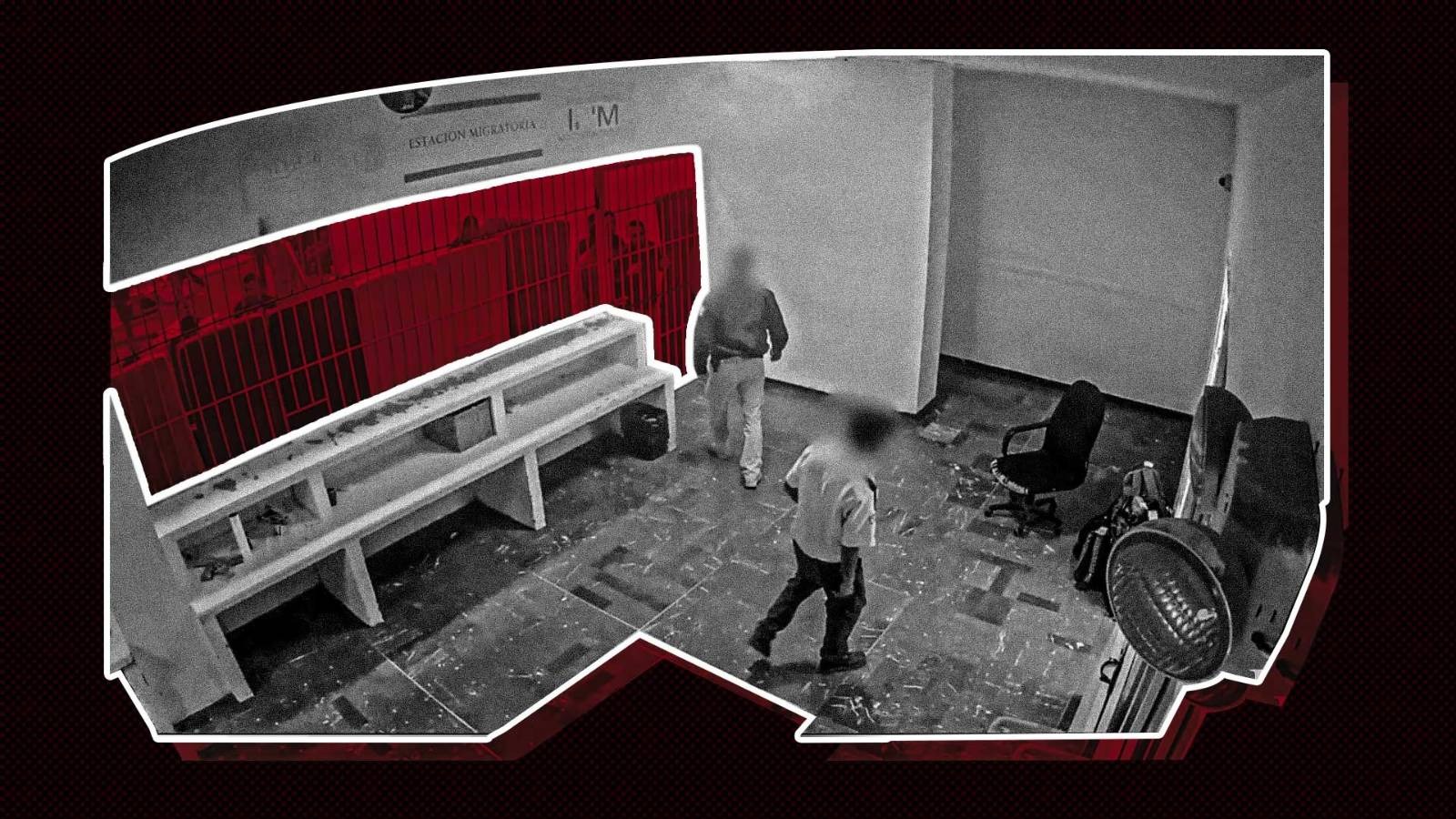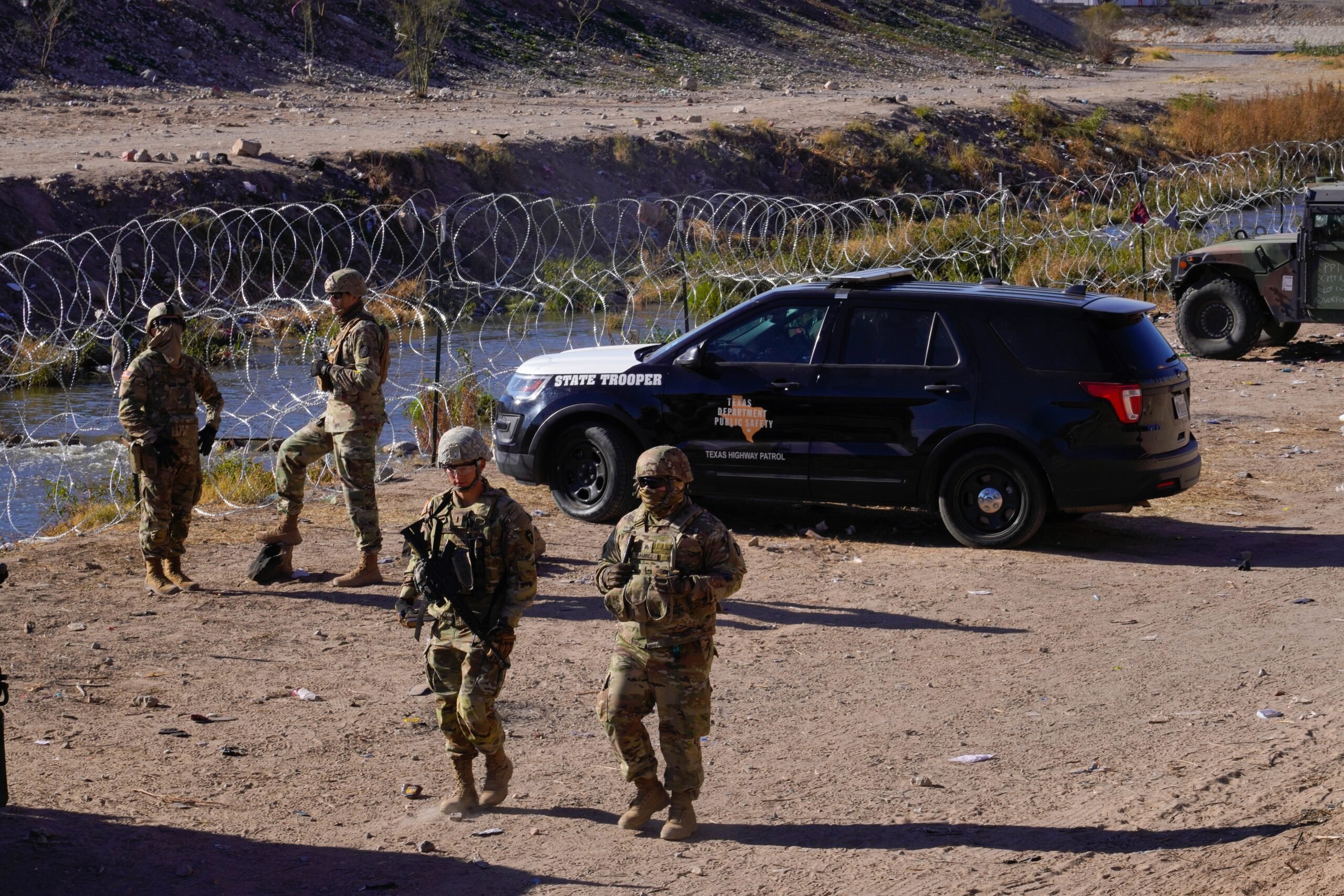
Mexico Turns To Television And Radio For Remote Learning
The countrywide plan is meant to reach students with limited internet connectivity, but the rollout has been bumpy.
Above: Ivanna and Alonso Granados exercise in their living room through a televised PE class that's part of the Mexican Government's at-home learning program.
This story was reported for and produced by The Texas Newsroom, a collaboration involving NPR and public radio stations across the Lone Star State.
Students in Mexico are starting a new school year, and just like many of their American counterparts, they’re doing so remotely.
Some 30 million Mexican public school students are now learning from home. That posed a challenge for the Mexican government, which had to figure out how to keep kids learning when only 53 percent of households have internet access. So it developed a distance-learning program through television and radio.
August 24 was Ivanna Granados’ first day of fourth grade. Part of her day included sitting on her living room couch watching an educational drama on TV. The show had a similar feel to a telenovela, or Latin American soap opera.
“It’s about a little girl who wants to go to school and her friends encourage her,” Ivanna said, speaking in Spanish. “Her dad doesn’t let her; he hits her and sends her to sell candy on the streets instead.”
But Ivanna was confused by the content of the show. She said she didn’t get it, and that, instead, she should be going over her multiplication tables, division, and fractions—picking up where she left off when schools shut down in March because of COVID-19.
But what she learns now is partly determined by a broad plan unveiled by Mexican President Andrés Manuel López Obrador at the beginning of August. That plan focused on offering televised classes, as well as radio broadcasts for students in remote areas. He insisted that the classes aren’t something to merely fill in education gaps until the pandemic subsides. According to an Associated Press story, he said, “It is returning to classes with all of the formality. … This is not an emergency or transitory course. It is starting classes in accordance with the education plan.”
López Obrador claimed the plan could be an example of large-scale, remote education for the rest of the world. But some parents, like Ivanna’s mother, Mercedes Granados, have their doubts.
“The responsibility falls completely on us because we don’t have any physical interaction with the teachers,” Granados said. “Everything is through an electronic device, and that’s not the same.”
Granados is a nutritionist, but now stays home with her children because of the pandemic.
Miguel Székely is the director of the Center for Educational and Social Studies in Mexico.
“I’m worried that this will create enormous lags,” Székely said. “We already have huge inequality gaps in education in Mexico.”
While the use of television was supposed to reach a wide range of students, he said it’s only transmitted through digital television, and 40 percent of lower-income households don’t have access to digital TV. Now, the government is working to expand programming through local television.
Also, many parents who are now tasked with helping teach their kids have limited education themselves.
“Around 60 percent live in a household where the parents have not reached even full primary education,” Székely said. “Those parents don’t really have the capacities to support the learning process at home.”
He fears the the dropout rate will grow; it was about 10 percent at the end of last school year, according to the Mexican Department of Education.
Guadalupe Guzmán, a sixth-grade teacher from Huajuapan de Léon, Oaxaca, said the day before school started the government hadn’t given teachers direction about how and what to teach this semester.
“Until now, they haven’t told us, ‘This is the study plan; this is the content we’ll be teaching with objectives we have to meet,’” Guzmán said. “We’re waiting for the school year to start, and hopefully we’ll know more as the classes advance.”
Many schools, including Guzmán’s, came up with their own curricula, which teachers are delivering to parents through WhatsApp group chats.
“This is going to put all responsibility in the parents because now they’re the connection between students and teachers,” Guzmán said.
Back at the Granados’ house, Ivanna did jumping jacks, mimicking her P.E. teacher on TV. Her mom, Mercedes, said she would prefer that the government just suspend school until it’s safe for students to go back in person.
Read more from the Observer:
-
A Monumental Undertaking: Protests to remove racist statues and iconography are part of a larger effort to reframe Texas history.
-
Beyoncé Isn’t Possible Without Houston. Houston Isn’t Possible Without the Black Diaspora: Texas’ artistic innovation is nothing new and continues to be center stage through artists like Beyoncé during yet another period of Black rediscovery.
-
Why Does John Cornyn Tweet?: An analysis.


